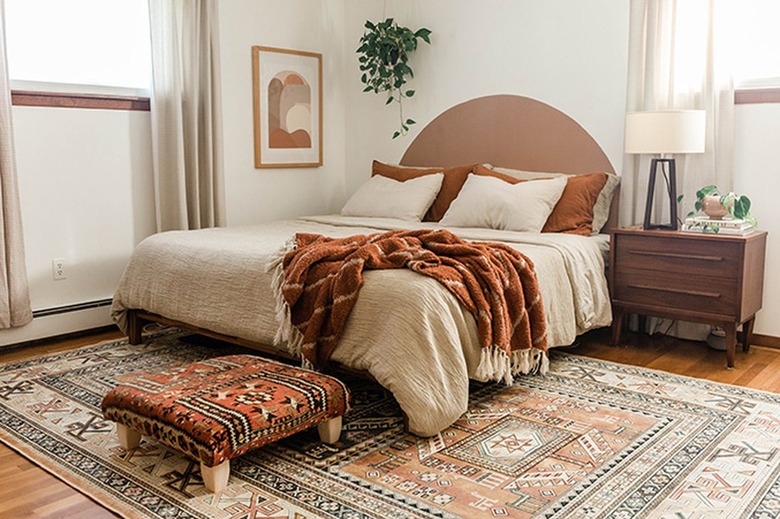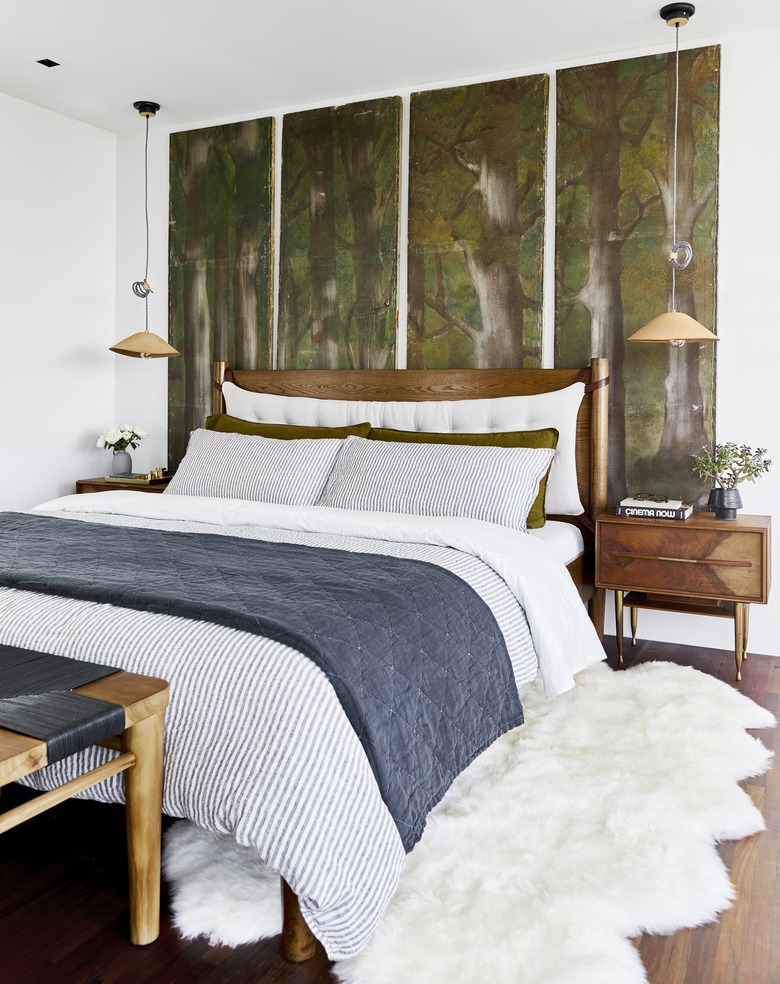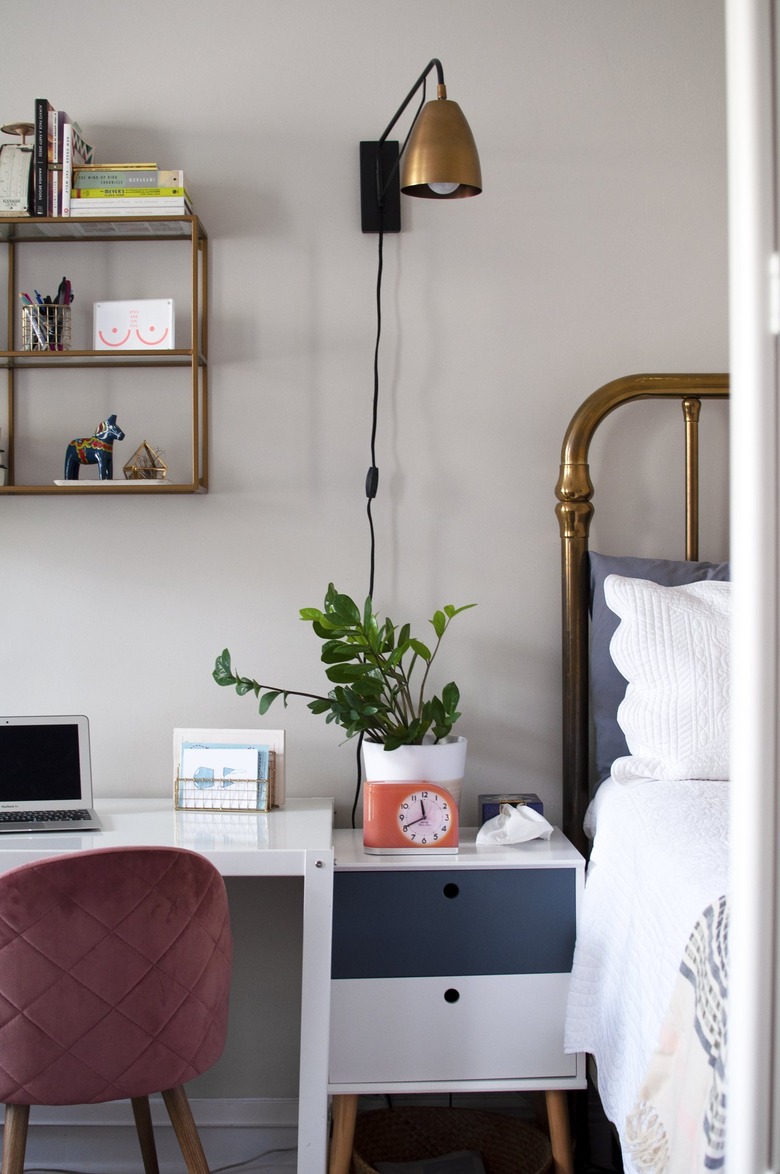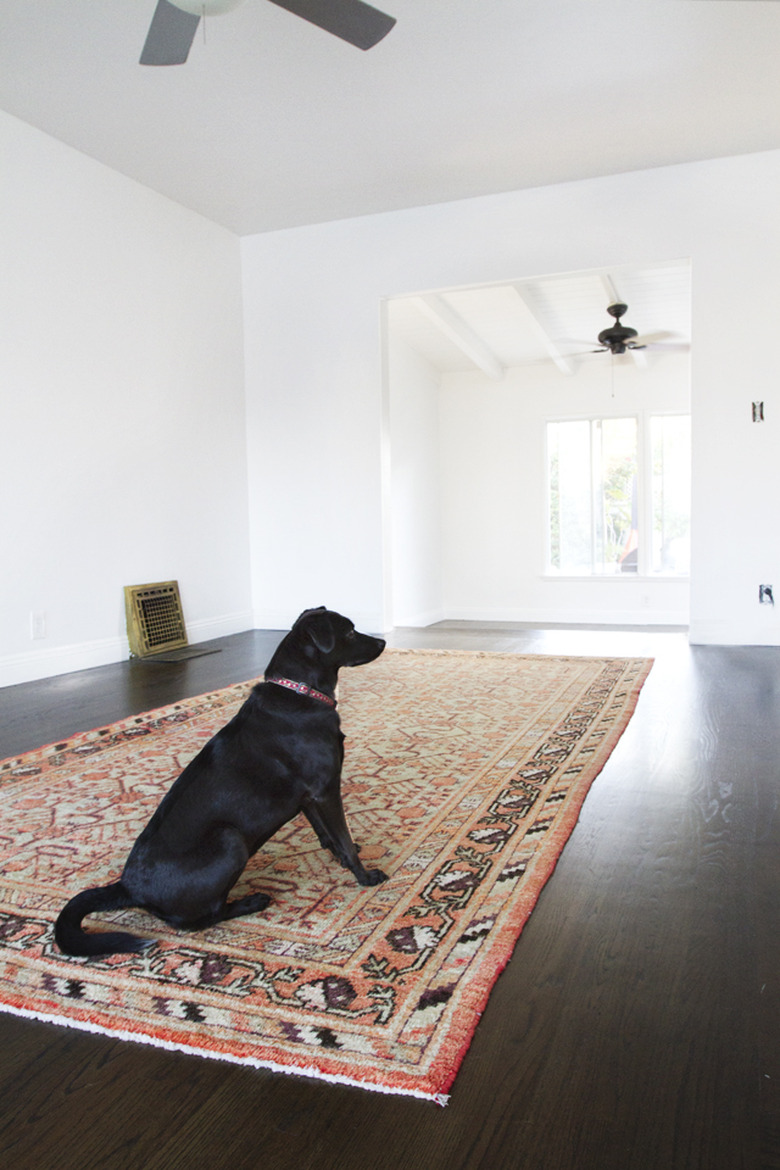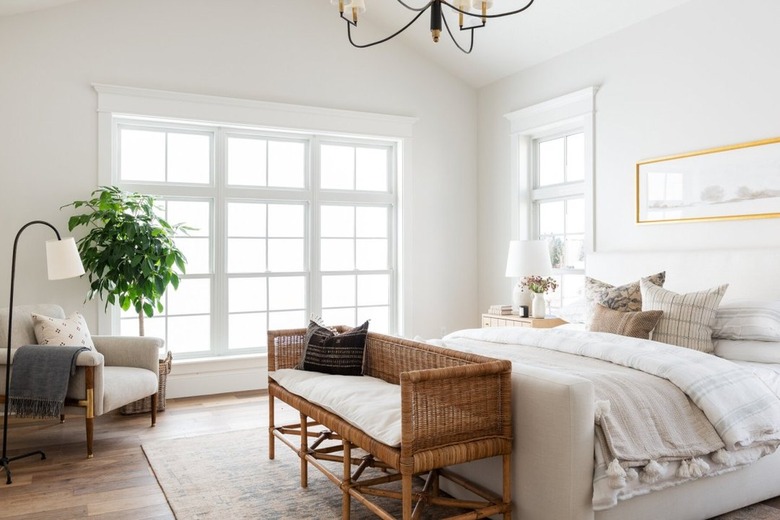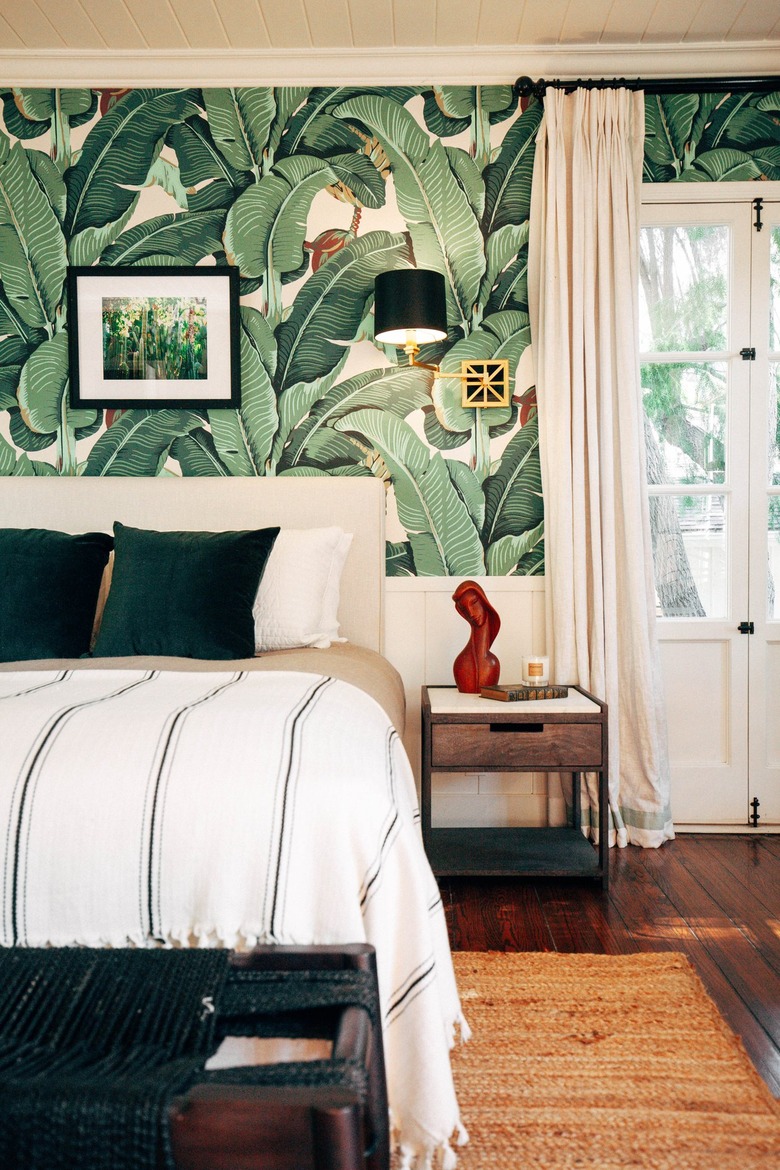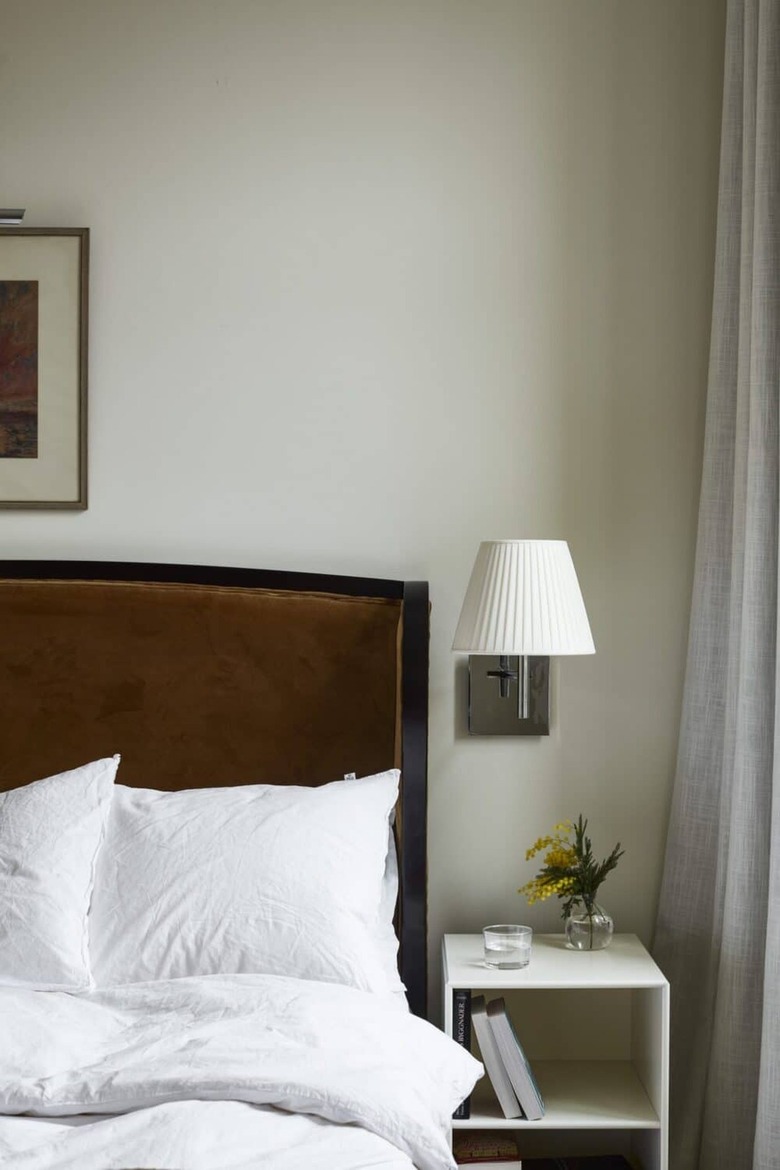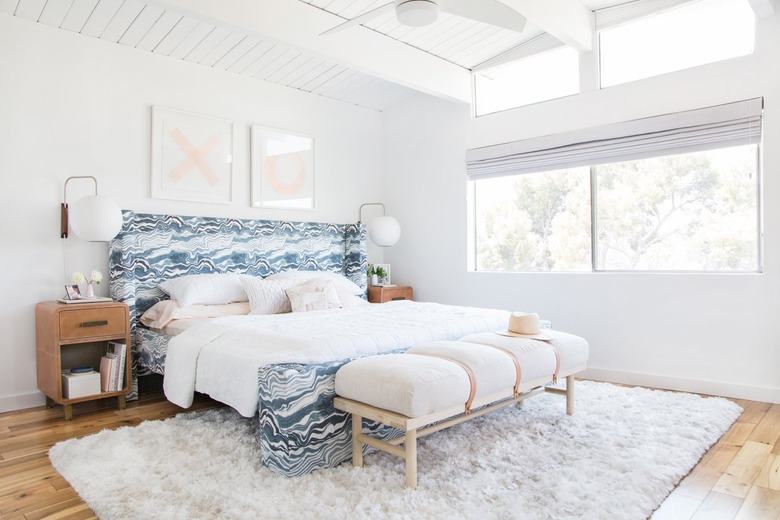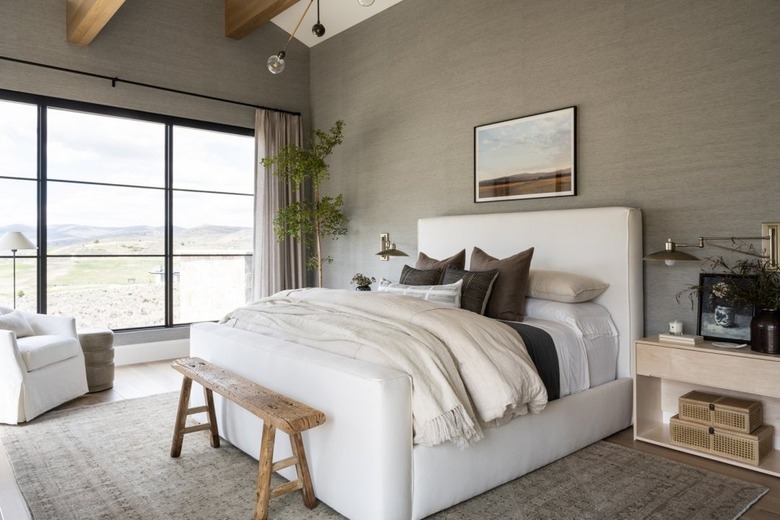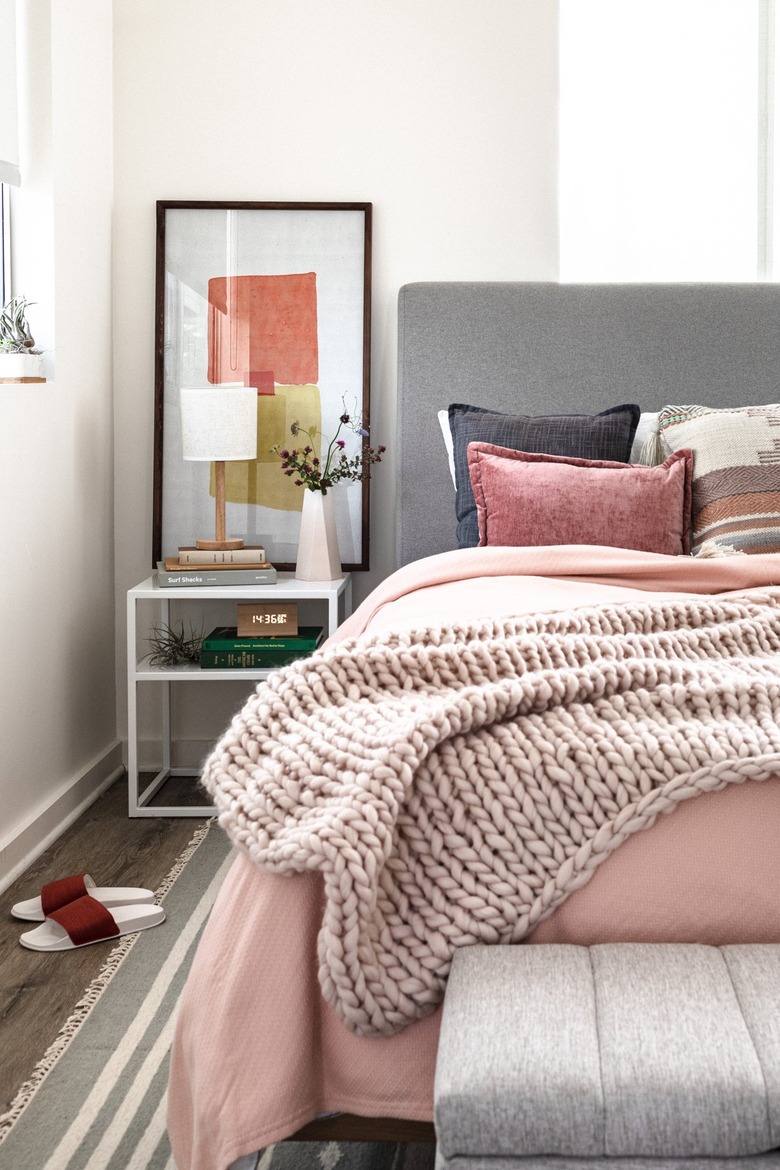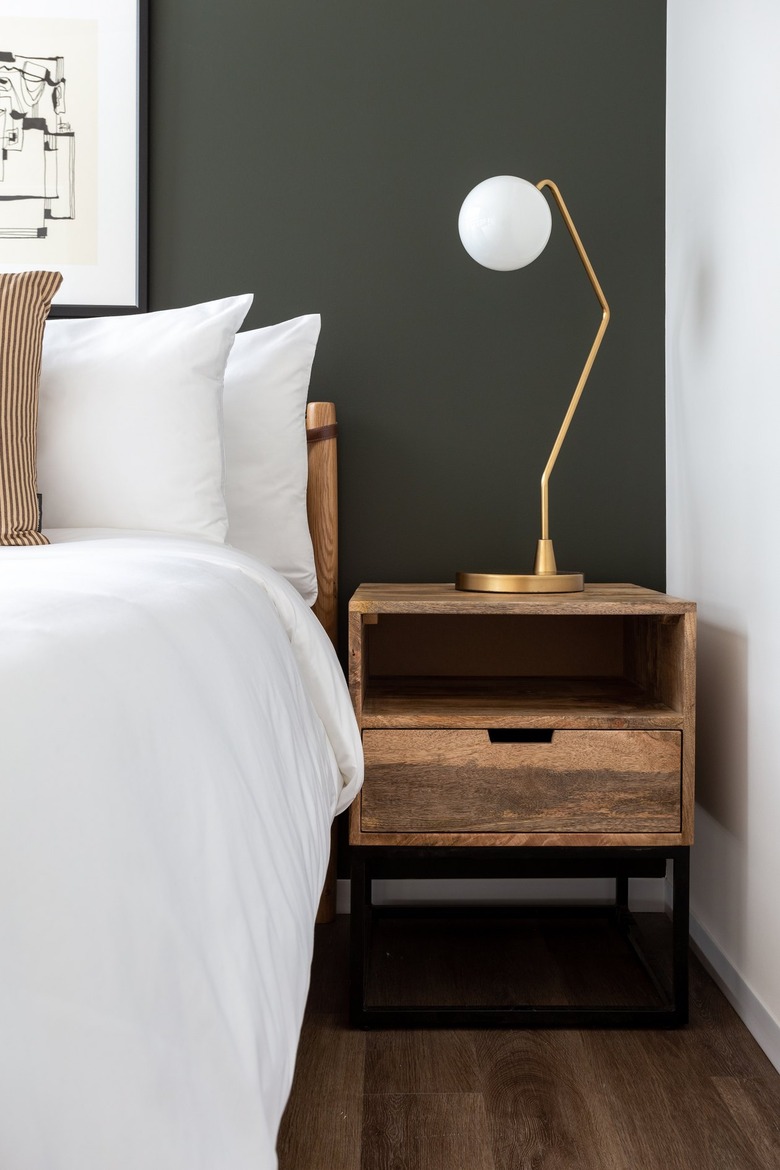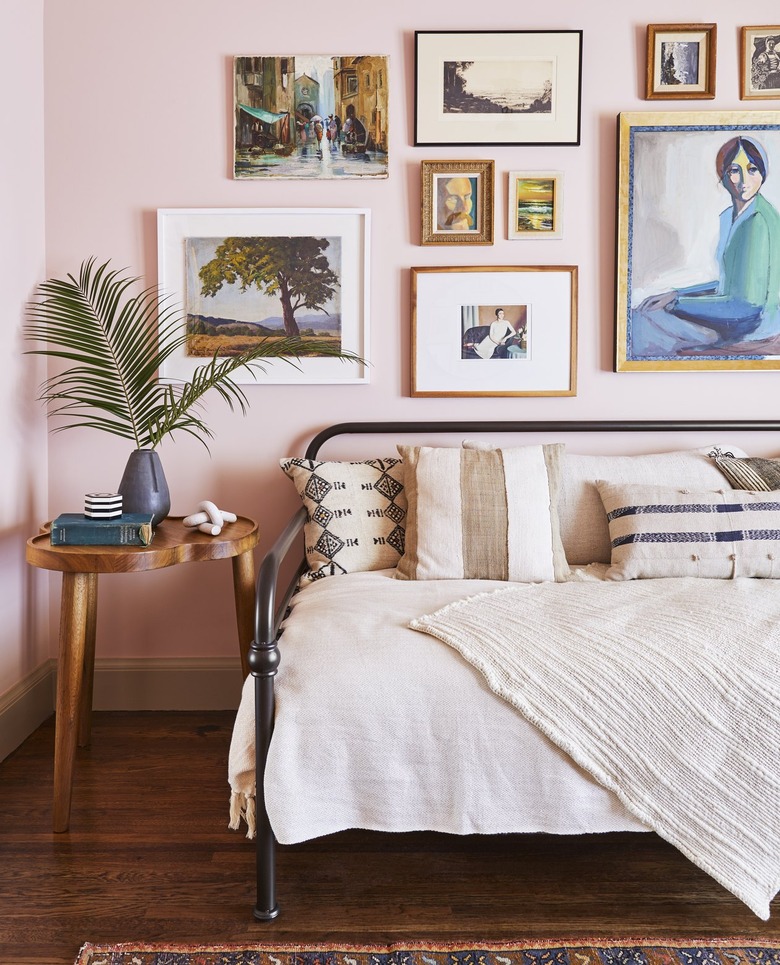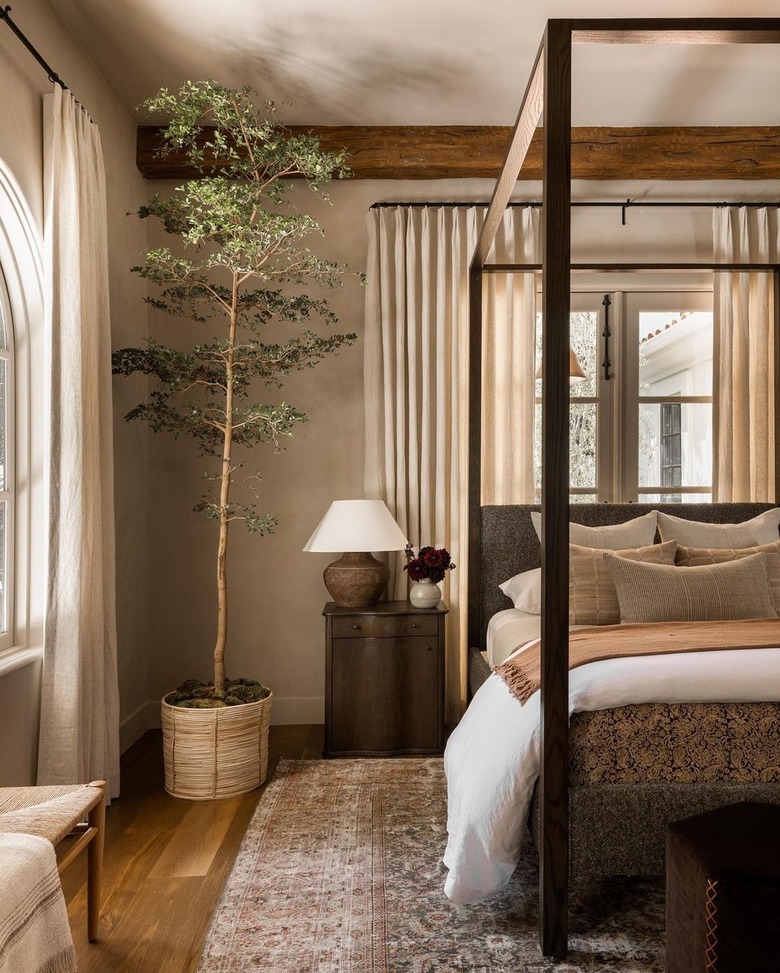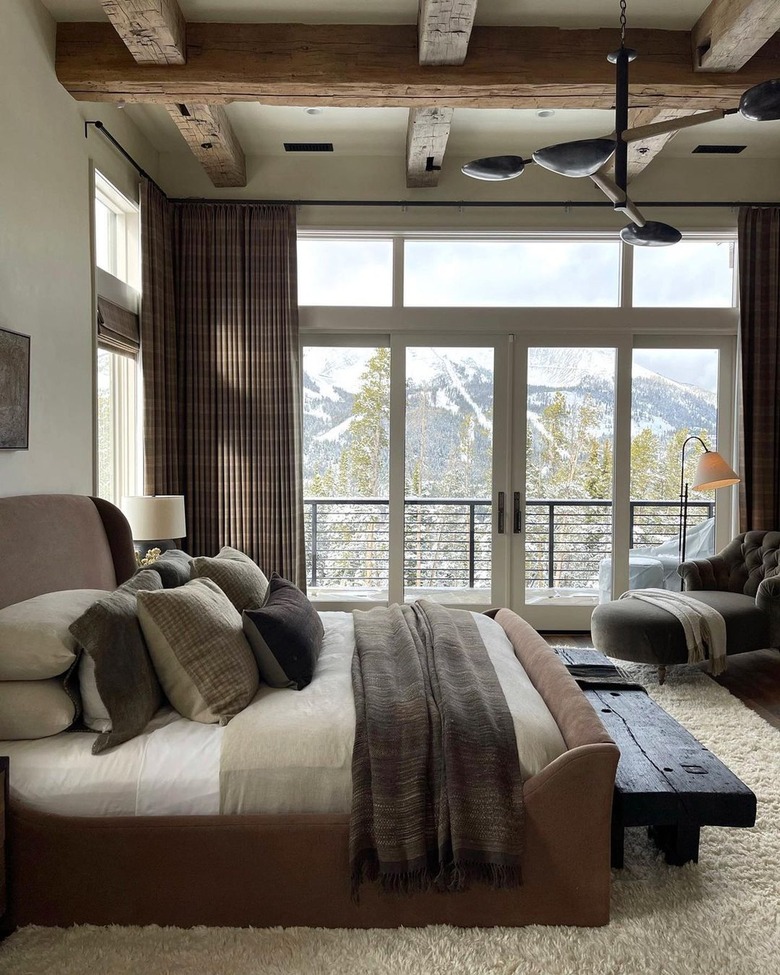15 Step-By-Step Tips For Designing The Bedroom Of Your Dreams
Designing a bedroom may feel like a daunting task. Especially if you're attempting a makeover of a room you've lived in for a while, it may be difficult to see new possibilities. But like any other endeavor, you can break this one down step by step to make it more manageable.
Start with the big picture: What design styles speak to you? What function do you need your bedroom to serve — is it just for sleep, or will it also be a small home office, for example? Then arrange the biggest furniture pieces and work your way down, until you're adding the finishing accents.
Interior designer Brooke Mennen-Talsma follows a similar tiered approach when designing her client's bedrooms. "I start by addressing the scale and functionality of their bed and nightstands," she says. "Then, I layer in textures and materials to add coziness and depth. And to top it off, I love adding sconces or pendants above the nightstands for the ultimate ambiance. After all, your bedroom should always double as your personal sanctuary."
Ready to start every day on the right side of the bed? Here are fifteen design tips and decorating ideas to help you create the bedroom of your dreams.
15 Bedroom Design Ideas
1. Take time to reflect on your design style.
Before making any big purchases or bold decisions, take the time to do some research and reflection. Peruse home decor magazines, blogs, and websites, and create a mood board of bedroom decorating ideas to look for patterns among your favorites. For example, what kind of finishes do you prefer: wood, metal, or fabric? Do all of the images you pin feature bright white bedroom walls, or do you like a little color, like the full-length green wall art in this space by Emily Henderson Design? Having a clear plan, or at least a general idea, can make your bedroom decorating a much smoother process.
2. Consider how you want your room to function.
Have you heard of the phrase "form follows function" in interior design? The overall vibe of your bedroom is essential, but also pay attention to factors like comfort, usability, and practicality. Plan with purpose and ensure you have enough storage to keep your room from looking cluttered. Consider whether you'll need space for working out, meditation, or a small bedroom office, like this one from Chloe Berk.
3. Start with a blank slate.
It might feel like an unnecessary headache, but removing every item from your bedroom, as Sarah Sherman Samuel did for this redesign, will help erase any preconceived notions about your space. You may have thought there was nowhere else you could have moved the bed, but with everything out of the way, you're more likely to come up with new ideas about potential bedroom layouts. Also, if you're planning to paint, now is the time to do this messy task.
4. Decide whether your bedroom is only for sleeping.
You might want your bedroom to be an oasis of tranquility designed only for a solid night's sleep. But, if you have the space, it can also be a multifunctional area you can retreat to during daytime hours, like this dreamy design from Studio McGee. You may want to incorporate a cozy reading nook, a vanity table, or seating for you to chat quietly with your partner away from the kids.
5. Choose your color palette—and it doesn't have to be neutral.
Bedrooms may be most widely associated with neutral paint colors that help make them look light, bright, and calming. However, bolder colors can work beautifully as well. Warm or deeply saturated shades can create a sense of coziness, even if you use them just for an accent wall, headboard, or bedding.
6. Assess what existing furniture will work in your new design.
Shopping for all-new bedroom furniture may be an appealing idea. But before you spend all of your savings, take a close look at your existing pieces of furniture to see if there is anything you can reuse in your design. You may discover a new use for an old item — like the small shelf in this room by Cassandra LaValle, which works beautifully as a simple bedside table. The money you save can go toward the splurge-worthy vintage rug you've been eyeing instead.
7. Start by placing the large, non-negotiable pieces of furniture.
In a bedroom, naturally, the bed frame takes center stage — like the stunning upholstered one in this airy space by Emily Henderson Design. After you've emptied your room to take a fresh look at it, bring the items back in, starting with the larger pieces of furniture first — think bed, dresser, armoire, etc. Once you're happy with where you've placed those pieces, you can move onto the smaller furnishings and accents, such as your bedside tables, chairs, and plants.
8. Leave some open space in your design.
As you arrange your furniture, be careful not to overfill your bedroom. Instead, leave enough space to move about the room and to let your eyes rest — as Studio McGee has done here. To keep clutter out of sight, consider storage beds, boxes, and benches.
9. Layer texture and color.
Layering is a wonderful way to add texture and warmth to your bedroom. Take the space above, for example. The hardwood flooring and off-white walls and duvet cover take on new life when paired with a patterned area rug, rich orange throw blanket and pillows, a painted headboard, and hanging greenery. These touches make the room feel cozy and inviting.
10. Prioritize your bedding.
The way you choose to style your bed will have a major impact the final feel of your room. It can add personality, create a focal point, and pull together the room's overall color scheme. Think layered throw pillows and blankets to add cozy texture, pops of color or pattern to zhuzh up a neutral palette, and high-quality materials to promote the best night's sleep.
11. Don't make lighting an afterthought.
Compared with big-ticket items like the bed, dressers, and flooring, bedroom light fixtures can be easy to forget. There are no hard-and-fast rules here, but sticking with overhead lighting alone might not create the cozy mood you want in a bedroom. Consider mixing a variety of sources, including task lighting (for spots like your nightstand or reading nook) and mood lighting (like fairy lights or paper lanterns), as well as dimmer switches to give you a range of options.
12. Choose window treatments for light and privacy.
The type of window treatments you choose depends on the level of privacy you're going for, the amount of natural light you want to let in, and your overall bedroom design. For example, full-length, thick drapes create a luxe vibe, while shutters are highly adjustable. A combination of two treatments can work especially well — for example, a sheer curtain for privacy and brightness during the day, plus blinds for nighttime.
13. Add personal items to create an intimate environment.
Now that your room is furnished, you're ready to add in the small details, like throw pillows, wall decor (think gallery walls, like this one from Emily Henderson Design), and greenery. This is where you can really let your personality shine. Display your art collection, personal photos, and meaningful gifts and trinkets from your travels. If you're crafty, now's the perfect time to start a couple DIY projects.
14. Select accents that help you relax and unwind.
It's not just the colors and textures you choose that create a serene sanctuary. Even if you're going for a minimalist design, some strategically placed relaxing accents can play a big part in making your bedroom feel more peaceful. Plants are known to be stress-relieving (and air-purifying), and a tall one, like the potted tree in the corner of this room by Amber Interiors, can make a beautiful focal point. Also, fragrant candles, cozy canopies, plush pillows, and natural fibers like rattan can all add to the soothing vibe.
15. Bring in rugs for a cozy, restful space.
Area rugs, like the plush one in this inviting bedroom by Amber Interiors, can immediately bring a room together. Match them to the overall color scheme, as done here, to create a sense of cohesion. Plus, they feel cozy underfoot and help to muffle sounds and retain warmth.
